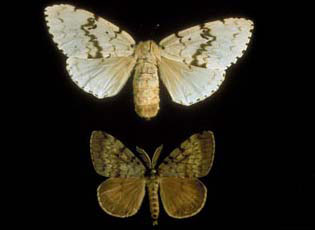European Gypsy Moth Survey Recently Completed

The Mosquito and Forest Pest Management Branch recently completed its annual, county-wide survey to assess the population levels of the European gypsy moth (Lymantria dispar dispar). This forest pest was introduced accidentally in Massachusetts in 1869 and has since spread across most of the Northeast and Mid-Atlantic regions. In their larval or “caterpillar” phase, they feed on leaves and can defoliate entire trees, leading to a variety of environmental consequences.
Fortunately, populations in Prince William County have remained low for the past several years. While gypsy moth populations have naturally increased and declined over the decades since their introduction, we may also be getting help from a fungus, Entomophaga maimaiga, which infects and kills gypsy moth larvae.
Entomophaga maimaiga is a Japanese fungus that was released to control gypsy moth populations in the northeast in 1910 and again in 1980. Both releases were considered failures as the fungus did not appear to become established. In 1989 the fungus was discovered to be responsible for the collapse of outbreak populations across several northeastern states, from Pennsylvania through New Hampshire. In the three years following, the fungus spread to five additional states including Virginia. There is no evidence that the introduction of this fungus has affected any native species in a significant way. It is unlikely that Entomophaga maimaiga will kill off gypsy moths in North America for good, but for now, it is helping to prevent large-scale outbreaks which could lead to detrimental changes in our forest composition.